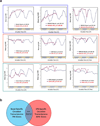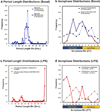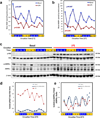Circadian rhythm reprogramming during lung inflammation
- PMID: 25208554
- PMCID: PMC4162491
- DOI: 10.1038/ncomms5753
Circadian rhythm reprogramming during lung inflammation
Abstract
Circadian rhythms are known to regulate immune responses in healthy animals, but it is unclear whether they persist during acute illnesses where clock gene expression is disrupted by systemic inflammation. Here we use a genome-wide approach to investigate circadian gene and metabolite expression in the lungs of endotoxemic mice and find that novel cellular and molecular circadian rhythms are elicited in this setting. The endotoxin-specific circadian programme exhibits unique features, including a divergent group of rhythmic genes and metabolites compared with the basal state and a distinct periodicity and phase distribution. At the cellular level, endotoxin treatment also alters circadian rhythms of leukocyte counts within the lung in a bmal1-dependent manner, such that granulocytes rather than lymphocytes become the dominant oscillating cell type. Our results show that inflammation produces a complex re-organization of cellular and molecular circadian rhythms that are relevant to early events in lung injury.
Figures










References
Publication types
MeSH terms
Substances
Associated data
- Actions
Grants and funding
LinkOut - more resources
Full Text Sources
Other Literature Sources
Medical
Molecular Biology Databases

